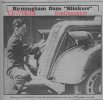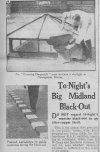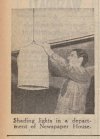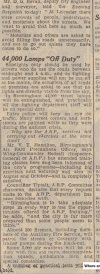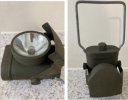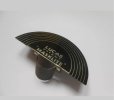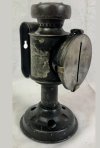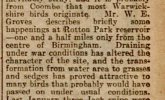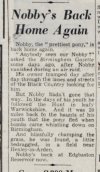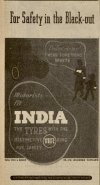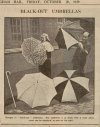-
Welcome to this forum . We are a worldwide group with a common interest in Birmingham and its history. While here, please follow a few simple rules. We ask that you respect other members, thank those who have helped you and please keep your contributions on-topic with the thread.
We do hope you enjoy your visit. BHF Admin Team -
HI folks the server that hosts the site completely died including the Hdd's and backups.
Luckily i create an offsite backup once a week! this has now been restored so we have lost a few days posts.
im still fixing things at the moment so bear with me and im still working on all images 90% are fine the others im working on now
we are now using a backup solution
You are using an out of date browser. It may not display this or other websites correctly.
You should upgrade or use an alternative browser.
You should upgrade or use an alternative browser.
Black-out preparations across Birmingham
- Thread starter Vivienne14
- Start date
Stokkie
master brummie
Mom lived in Reservoir Terrace close to Edgbaston Reservoir during both World Wars. I remember her saying that oiled coal dust was floated on the surface to prevent reflections of moonlight in the war, so that bombers were hindered in navigation. Anyone substantiate this? Was it a short term experiment and did it work? I know that some strange things were done by the boffins elsewhere, such as setting the sea on fire off the Suffolk coast to deter invasion.She had vivid memories of Docker's paint factory being bombed and set on fire in 1942.
Interesting thought that, it may have some merit. We know German pilots did use water as navigational aids. The Germans would follow the River Severn, counting the bridges to Bewdley. A right turn at Bewdley bought them right into the industrial heartlands. So, these large reservoirs would have been conformation of the target area.Mom lived in Reservoir Terrace close to Edgbaston Reservoir during both World Wars. I remember her saying that oiled coal dust was floated on the surface to prevent reflections of moonlight in the war, so that bombers were hindered in navigation. Anyone substantiate this? Was it a short term experiment and did it work? I know that some strange things were done by the boffins elsewhere, such as setting the sea on fire off the Suffolk coast to deter invasion.She had vivid memories of Docker's paint factory being bombed and set on fire in 1942.
Edgbaston Reservoir I understand is also a canal reservoir, so its not as if they were polluting the potted water supply either.
These were certainly desperate time with lots of ideas emerging, it certainly warrants further research
oldMohawk
gone but not forgotten
When I was very little I saw men doing this .... 
In the days after war broke out (ww2) they imposed a blackout and switched all the street lamps off. This meant folks had problems seeing where they were going so white stripes were painted on the kerbs, they can be seen in many old street pics from those times. The painters in this pic are of course wearing their hats ... three different types ...

Pedrocut
Master Barmmie
Battle of the Beams…”German Air Force (Luftwaffe) used a number of increasingly accurate systems of radio navigation for night bombing in the United Kingdom….”
 en.wikipedia.org
en.wikipedia.org
Battle of the Beams - Wikipedia
Thank you Vivienne for the post on Blackout Regulations.The importance of extinguishing/dimming lights during air attacks in WW2. And a few of small items which were put to use. Viv.
View attachment 173597
View attachment 173596View attachment 173598
Below: a Bladon air raid candle lamp
View attachment 173599
It reminded us of my wife's parents who married in Handsworth on 1st September 1939, the day war broke out. They were due to go on honeymoon to North Devon but ended up putting up blackout. Most of their luggage had been sent on to North Devon a few days before which eventually took along time to be sent back to them
Stokkie
master brummie
Thank you Morturn. Yes, a canal reservoir, so not drinking water. Canal World has a short discussion after someone posted that they heard a rumour coal dust was used. Most comments dismissive.Interesting thought that, it may have some merit. We know German pilots did use water as navigational aids. The Germans would follow the River Severn, counting the bridges to Bewdley. A right turn at Bewdley bought them right into the industrial heartlands. So, these large reservoirs would have been conformation of the target area.
Edgbaston Reservoir I understand is also a canal reservoir, so its not as if they were polluting the potted water supply either.
These were certainly desperate time with lots of ideas emerging, it certainly warrants further research
MRD Foot a serious military historian who worked in intelligence 'argues that blackouts did not impair navigation by bombers because navigators focused more on reflective bodies of water, railroad tracks, or large highways.' Wikipedia 'Blackout' citing Foot M, Dear I, eds. (1995). "Blackout". The Oxford Companion to World War II. Oxford University Press. pp. 134–135. (I don't have a copy)
Worth asking Imperial War Museum if they know of coal dust being used?
We think alike, have already done so. They don’t normally answer research question nowadays, but worth a punt.Thank you Morturn. Yes, a canal reservoir, so not drinking water. Canal World has a short discussion after someone posted that they heard a rumour coal dust was used. Most comments dismissive.
MRD Foot a serious military historian who worked in intelligence 'argues that blackouts did not impair navigation by bombers because navigators focused more on reflective bodies of water, railroad tracks, or large highways.' Wikipedia 'Blackout' citing Foot M, Dear I, eds. (1995). "Blackout". The Oxford Companion to World War II. Oxford University Press. pp. 134–135. (I don't have a copy)
Worth asking Imperial War Museum if they know of coal dust being used?
Stokkie
master brummie
Thanks! I'll leave IWM to you then. I guess they get too many questions they can't deal with these days. Or ones that are really can you do my homework?We think alike, have already done so. They don’t normally answer research question nowadays, but worth a punt.
oldMohawk
gone but not forgotten
Scattering coal dust on pools ... I never saw it ... and I don't think ducks and other water fowl would have liked it ... 
The Luftwaffe never 'precision bombed' Birmingham they followed the X-Gerate or Knickebein beams. If they were using X-Gerate there would be a cross-beam across the city centre, Often there was 'creep-back' which caused the southern half of the city to be bombed slightly more than the northern half.
A beam map
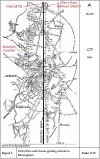
The Luftwaffe never 'precision bombed' Birmingham they followed the X-Gerate or Knickebein beams. If they were using X-Gerate there would be a cross-beam across the city centre, Often there was 'creep-back' which caused the southern half of the city to be bombed slightly more than the northern half.
A beam map

oldMohawk
gone but not forgotten
Note the front light on the tram has a small slot to let out a little light ...
A No 6 Perry Barr tram outside the Miller Street depot prepared for the blitz.

(only visible if logged in)
Stokkie
master brummie
Thanks oldMohawk. Mother was 31 in 1939 and 8 when the Zeppelin Raid intended for Liverpool took place which resulted in Black Country towns being bombed.Scattering coal dust on pools ... I never saw it ... and I don't think ducks and other water fowl would have liked it ...
The Luftwaffe never 'precision bombed' Birmingham they followed the X-Gerate or Knickebein beams. If they were using X-Gerate there would be a cross-beam across the city centre, Often there was 'creep-back' which caused the southern half of the city to be bombed slightly more than the northern half.
A beam map
View attachment 173612
Oral history, especially of wartime is always prone to mistaken impressions, hearsay (certainly in this case) and sometimes in the case of the sea being set on fire at Shingle Street possible deliberate black propaganda.
If there was coal dust, it could have been in WW1?
If WW2 it could have been a one-off experiment?
Any coal dust might have been a cover for other activity. Establishing an anti-aircraft battery? Mond had a nickel factory nearby.
Just rumour passed on? I don't know if Mom saw anything personally?
As to precision bombing, the Spitfire factory at Castle Bromwich was bombed 13 Aug 1940, BSA Small Heath was bombed 25/26 Aug. I imagine deliberately. But lakes and reservoirs are very noticeable at night. Suggesting that the enemy couldn't do precision bombing might persist after the war?
In both wars British codebreaking is in operation, it could have been a misleading story to deflect attention from radar - I see the beam wikipedia article also describes counter-measures.
It could have been a story to improve morale in the civilian population?
But thank you for your answer. I appreciate it. Derek
Stokkie
master brummie
Oral history and folk memory. I currently live in a Worcestershire village. There is a 'bomb field' where people sledge when it snows. There's a hole in the hill which people say is a bomb crater, though to me it looks like the entrance to a disused mine for coal or minerals. Most of the people who are old enough to be children in the war say the chemical works was bombed. But I've checked the bombing records and there is no sign of any bombing within miles of here. Of course the local Auxiliary Unit would need to practice setting off explosives. There were plans to blow up bridges here and put a road block across the A38 to protect or destroy the transmitter at Wychbold. So if there were bangs in the night then there could be an explanation. But everyone insists it is a bomb field... (Not Birmingham, but our coal dust on the reservoir got me thinking about oral history and folk memory).
oldMohawk
gone but not forgotten
Hi StokkieThanks oldMohawk. Mother was 31 in 1939 and 8 when the Zeppelin Raid intended for Liverpool took place which resulted in Black Country towns being bombed.
Oral history, especially of wartime is always prone to mistaken impressions, hearsay (certainly in this case) and sometimes in the case of the sea being set on fire at Shingle Street possible deliberate black propaganda.
If there was coal dust, it could have been in WW1?
If WW2 it could have been a one-off experiment?
Any coal dust might have been a cover for other activity. Establishing an anti-aircraft battery? Mond had a nickel factory nearby.
Just rumour passed on? I don't know if Mom saw anything personally?
As to precision bombing, the Spitfire factory at Castle Bromwich was bombed 13 Aug 1940, BSA Small Heath was bombed 25/26 Aug. I imagine deliberately. But lakes and reservoirs are very noticeable at night. Suggesting that the enemy couldn't do precision bombing might persist after the war?
In both wars British codebreaking is in operation, it could have been a misleading story to deflect attention from radar - I see the beam wikipedia article also describes counter-measures.
It could have been a story to improve morale in the civilian population?
But thank you for your answer. I appreciate it. Derek
I was a very young child during the blitz so my view I suppose is different to the official history. It was an experience I haven't really forgotten and every time a 'blitz' thread opens I tend to post in it.
I had one narrow escape but can remember only one other time when I really frightened.
The Castle Bromwich Spitfire factory was certainly bombed as can be read about in one of my posts.
https://birminghamhistory.co.uk/for...e-bromwich-spitfire-factory.52293/post-765908
Stokkie
master brummie
Thank you, oldMohawk. It is important to record first hand impressions of events. I worked with a man who was a child in the East End London blitz. He commented that you knew who the enemy were as they tried to drop fire bombs on your head every night. Earlier I worked with a chain-smoker who acquired the habit in the plotting room as a WAAF. 'What really happened' is sometimes at variance with the official history. So oral impressions are valuable. People who worked at Bletchley Park said nothing to anyone until the 1970s. Those who worked there saw the German perspective of events as well as the British view of the war and knew sometimes that what was said officially wasn't always the entire truth and exaggerated British successes.Hi Stokkie
I was a very young child during the blitz so my view I suppose is different to the official history. It was an experience I haven't really forgotten and every time a 'blitz' thread opens I tend to post in it.
I had one narrow escape but can remember only one other time when I really frightened.
The Castle Bromwich Spitfire factory was certainly bombed as can be read about in one of my posts.
https://birminghamhistory.co.uk/for...e-bromwich-spitfire-factory.52293/post-765908
By the way, I wasn't criticising your view that floating coal dust on water wasn't done in my intervening post on oral history and folk memory, it is a strange idea. And so far there's not much evidence for it. But mother wouldn't have invented it - as I speculated there could be various explanations for people thinking this. And in difficult times strange ideas are tried out. Derek
Last edited:
oldMohawk
gone but not forgotten
As part of black-out preparations vee shaped covers appeared on overhead tram wires at termini. They were fitted to help conductors position the wheel of the collector pole on the overhead wires during black-out conditions ... it wasn't easy in normal daylight conditions. Unfortunately the trams were not always stopped in the correct positions as the two photos show.

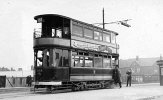


The following seems another way of disguising Edgbaston Reservoir. A gentleman named Donald Bonehill recorded this memory in 2005 for the BBC People's War Archive:
I was eight years old when WW2 broke out. A year before the war started we moved for family reasons from Northfield (in the leafy suburbs) to Barford Road, Ladywood, close to an industrial centre. This proved to be a poor decision. An even worse decision was made by the neighbours of my Grandparents who lived a few hundred yards away in Summerfield Crescent overlooking Rotten Park Reservoir; because the reservoir would be a focal point for bombers. These neighbours moved a short distance further away to a house at the corner of Gillot Road and Link Road. One night I heard a hissing noise and the first bomb in the area landed at the junction of Gillot Road and Link Road. Outside their house, shortly afterwards the reservoir was drained to half its size.
I had heard previously that it had been drained during the war and had assumed it was total - but this sounds a more accurate description and meant that its main function as a canal water store could be maintained.
(This gentleman also remembered the huge fires as the Docker paint factory was hit).
Chris
I was eight years old when WW2 broke out. A year before the war started we moved for family reasons from Northfield (in the leafy suburbs) to Barford Road, Ladywood, close to an industrial centre. This proved to be a poor decision. An even worse decision was made by the neighbours of my Grandparents who lived a few hundred yards away in Summerfield Crescent overlooking Rotten Park Reservoir; because the reservoir would be a focal point for bombers. These neighbours moved a short distance further away to a house at the corner of Gillot Road and Link Road. One night I heard a hissing noise and the first bomb in the area landed at the junction of Gillot Road and Link Road. Outside their house, shortly afterwards the reservoir was drained to half its size.
I had heard previously that it had been drained during the war and had assumed it was total - but this sounds a more accurate description and meant that its main function as a canal water store could be maintained.
(This gentleman also remembered the huge fires as the Docker paint factory was hit).
Chris
oldMohawk
gone but not forgotten
Some blackout precautions in wartime Great Barr
Beeches Road, Great Barr in wartime 1941. They painted white stripes on the kerbs and white rings on lamp posts to help folks find their way around in the blackout. Zoom in and see a crowd waiting at the bus terminus for the 188 Midland Red bus standing opposite outside the Cottage Stores.

Stokkie
master brummie
Appreciated Chris! Must investigate the BBC archive.The following seems another way of disguising Edgbaston Reservoir. A gentleman named Donald Bonehill recorded this memory in 2005 for the BBC People's War Archive:
I was eight years old when WW2 broke out. A year before the war started we moved for family reasons from Northfield (in the leafy suburbs) to Barford Road, Ladywood, close to an industrial centre. This proved to be a poor decision. An even worse decision was made by the neighbours of my Grandparents who lived a few hundred yards away in Summerfield Crescent overlooking Rotten Park Reservoir; because the reservoir would be a focal point for bombers. These neighbours moved a short distance further away to a house at the corner of Gillot Road and Link Road. One night I heard a hissing noise and the first bomb in the area landed at the junction of Gillot Road and Link Road. Outside their house, shortly afterwards the reservoir was drained to half its size.
I had heard previously that it had been drained during the war and had assumed it was total - but this sounds a more accurate description and meant that its main function as a canal water store could be maintained.
(This gentleman also remembered the huge fires as the Docker paint factory was hit).
Chris
Derek
Pedrocut
Master Barmmie
Scattering coal dust on pools ... I never saw it ... and I don't think ducks and other water fowl would have liked it ...
The Luftwaffe never 'precision bombed' Birmingham they followed the X-Gerate or Knickebein beams. If they were using X-Gerate there would be a cross-beam across the city centre, Often there was 'creep-back' which caused the southern half of the city to be bombed slightly more than the northern half.
A beam map
View attachment 173612
Rotton Park/ Edgbaston reservoir in January 1940 was used for Skating with the ice up to 8 in thick.
At other times of the year it was used for Boating, Fishing and Motor boat trips at Reservoir.
Stokkie
master brummie
In later years it was used for sailing, sea cadets, swimming and sometimes drowning.Rotton Park/ Edgbaston reservoir in January 1940 was used for Skating with the ice up to 8 in thick.
At other times of the year it was used for Boating, Fishing and Motor boat trips at Reservoir.
Stokkie
master brummie
That's a feel-good story for wartime. I'm not sure Nobby the pony would be happy to be called a donkey though.Great story from May 1941, Nobby the prettiest donkey has been found and back at the Reservoir.
View attachment 173641View attachment 173643

